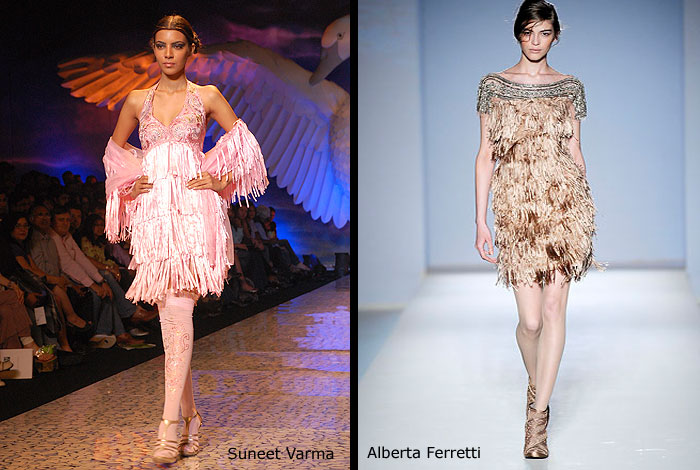The flapper dress keeps coming back in fashion over and over again. Find out how the 1920s and 2010 share a lot in common.

Fashion always reflected everything that happened in society. Up until the 1920s, fashion was a rich woman’s prerogative. The ‘roaring twenties’ are synonymous with the flapper dress and since the flapper dress was easy to construct, a lot of people were successful in making it at home. While pop culture movies always flaunted short flapper dresses, hemlines were short only between 1926 and 1928 where the flapper fashion peaked to reveal knees. For most part of the decade dresses and coat lengths were calf length.
THE MANNISH SILHOUETTE TREND
The First World War I (1914-1918) had started and women had to take up a lot of male chores and roles. The resultant fashion was a boyish touch to silhouettes. The clothes were shapeless and loose and the bust was flattened. The hair was short and narrow hips were preferred to the more wholesome curves. In fact big busted girls had to bandage their breasts for the flat silhouette. There were bras available in the market that could be laced at both sides and pulled to flatten the chest. The more boyish a woman looked, the more fashionable she was.
THE ACCESSORIES
Since the flapper trend demanded bare arms, the legs also had to undergo a makeover. Where young girls only wore woollen stockings in black to cover their legs, their 1920s counterparts gave the impression of nude with their beige stockings. Stockings in nude and pastels were a rage. This was also a time where Coco Chanel came into the picture with comfortable clothes—a break from the constricting corsets—and soft fabrics and fluid silhouettes. Other than stockings the big accessory of the 1920s was the Cloche hat. To match the extremely short hair of the 20s the Cloche hat was a skull-hugging hat that only fit cropped hair. It fit really low on the face as it was considered unfashionable expose your forehead then.
COATS AND SHOES
Throughout the 20s the hemlines varied but the one thing that remained constant was the wrap over coat in all kinds of lengths. It was fastened on one side with an oversized button or a huge clasp or buckle. Mary Janes with ankle straps, T-bar shoes with bows with heels over 2 inches was the shoe fetish of the era. Shoes started to evolve because they were actually visible with the now shorter hemlines.
The new breed of modernwomen ended with the Great Depression of 1929 when the traditionalist view of women and frugality replaced the more liberal flapper era. But the dress and the era still remains a very important time for fashion and epitomised the youthful, free-thinking woman.







